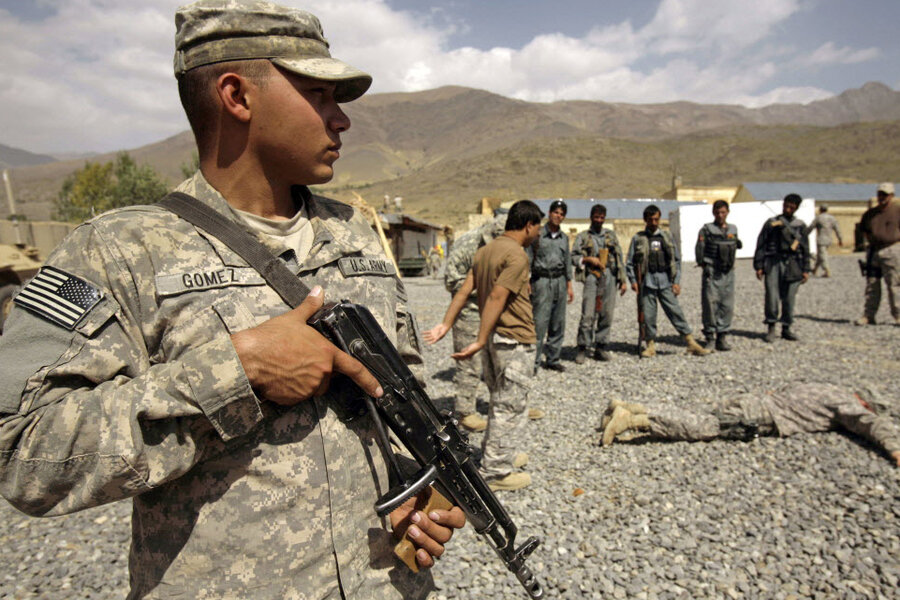Afghanistan: Six killed by insiders, insurgents blow up $180m in jets
Loading...
| Kabul, Afghanistan
At least six coalition soldiers were killed in Afghanistan this weekend in two separate incidents where members of the Afghan security forces turned their weapons against international forces.
In Afghanistan’s southern Zabul province, four coalition soldiers were reportedly killed by a group of Afghan police who turned their weapons on international troops. The other incident occurred on Saturday and left two British soldiers dead.
News of the latest so-called “green-on-blue” killings adds to what has become a serious and lethal trend confronting international forces here. Such attacks have left at least 51 international troops dead this year alone, a first for the Afghan war.
Although the international military is slated to end its combat mission in Afghanistan in 2014, the green on blue killings and the insurgent infiltration they likely represent, may pose a serious threat for the long-term stability of Afghanistan.
“The issue of green on blue attacks is not only a tragic issue for international forces and Afghan forces right now, but post-2014 this could change into the collapse of one or many of government institutions in various districts and provinces,” says Waliullah Rahmani, executive director of the Kabul Center for Strategic Studies. “There might be a risk of many elements of the Taliban and insurgency or people who are loyal to them who spy for these groups inside the Afghan government.”
In recent months, the Afghan insurgency seems to be placing increasing reliance on infiltration tactics to carry out attacks against Afghan and international forces.
On Sunday, the International Security Assistance Force in Afghanistan released new details about an attack on Camp Bastion, a major air base in southern Afghanistan’s Helmand province.
The base serves as one of the central logistical hubs for the British military and is attached to Camp Leatherneck, the central base for US Marines in southern Afghanistan.The camps are one of the most heavily guarded areas in Afghanistan, but on Friday, a group of 15 insurgents managed to breach the perimeter fence reportedly wearing US military uniforms and carrying rifles, grenade launchers, and suicide vests.
The insurgents managed to destroy 6 AV-8B Harrier jets and significantly damage two more. A single Harrier jet is valued at up to $30 million. Fourteen of the attackers were killed and another captured, but not before they managed to kill two international service members and injure an additional eight soldiers and a civilian contractor.
Coming amid the on-going wave of green-on-blue incidents, the attack against Camp Bastion has raised concerns about the apparent vulnerability of international forces working to transition authority to their Afghan partners as they begin reducing their numbers here.
Abdul Ghafoor Liwal, director of Regional Studies Center of Afghanistan, says it is more important than ever for US and international forces to use their remaining time to harbor good will among Afghans. Nearly 11 years into the war here, he says many Afghans now struggle to understand why international forces are still here and why they deserve Afghan support.
“Aside from the influence of the Taliban and other enemies, I think the behavior of international forces in Afghanistan causes so many problems which result in these kinds attacks,” says Mr. Liwal, speaking about green-on-blue killings. “I think the international forces must rethink their behavior, their relationship with the Afghan people, and their justification of their existence in Afghanistan.”








